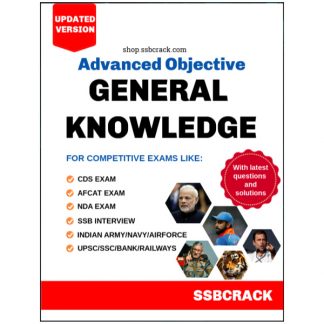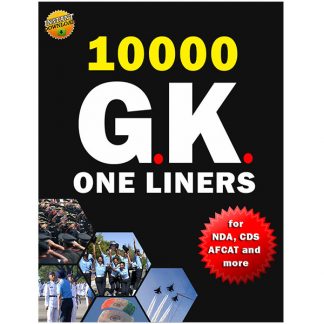
Download Indian Economy eBook 900 Questions Answers. Candidates who are preparing for the CDS NDA and AFCAT exam for defence forces can download the Indian Economy CDS NDA AFCAT 900+ MCQs eBook linked below. These Indian Economy questions will be helpful for the preparation of NDA, CDA and AFCAT questions. The Indian Economy question including latest MCQs on GST are fully covered with theory and solved MCQs with the full explanation.
Indian Economy eBook [900+ MCQs Covered]
INDIAN ECONOMY AT A GLANCE
The economy of India is a developing mixed economy. It is the world’s sixth-largest economy by nominal GDP and the third-largest by purchasing power parity. Wikipedia
Currency: Indian rupee
Gross domestic product: 2.26 lakh crores USD (2016) World Bank
GDP growth rate: 7.1% annual change (2016) World Bank
GDP per capita: 1,709.39 USD (2016) World Bank
GNI per capita: 6,490 PPP dollars (2016) World Bank
Internet users: 10.1% of the population (2011) World Bank
Gross national income: 8.59 lakh crores PPP dollars (2016) World Bank
IMPORTANT FACTS
- India has modelled its planning according to Russian 7 years plan after independence.
- India is the seventh largest economy in the world at present and third largest by purchasing power parity.
- Three sectors – Primary, Secondary and Tertiary.
- Primary – includes agriculture, forestry and fishing.
- Secondary – includes manufacturing, gas, water and electricity supply.
- Tertiary Sector – includes transport, storage and communication.
- First five year plan – 1951 – 1956. Based on Harrod Domar model. Agriculture is the main aim.
- Second Five year plan – 1956-1961 based on Mahalonobis model.
- Third Five year plan – 1961-1966. It was a failure plan.
- Fourth five year plan – 1969-1974. Main aim is stability and progress towards self-reliance.
- Fifth five year plan – 1974-1978. Also called as ‘rolling plan’. Poverty and reduction of unemployment is the main aim.
- 12th five year plan- 2012-2017. To achieve growth rate of 8% GDP per annum.
- Direct and indirect are types of taxes. Indirect tax is paid by one person but collected from another one.
- On 18th June 2004, implementation of VAT was introduced.
- SEBI act formed in 1992 to act as Market intermediaries.
- Under finance commission act of 1951, Dr.B.R.Ambedkar played a vital role as Father of Indian constitution.
- IFC – International Finance Commission established on 20th July 1956.
- ICSID – International Centre for Settlement of Investment disputes formed in 1966
INDIAN ECONOMY: MULTIPLE CHOICE QUESTIONS WITH ANSWER AND EXPLANATION
- 1. A recent survey (by Bloomberg) shows that the USA has fallen behind emerging markets in Brazil, China and India as the preferred place to invest. Why is it so?
- Unstable economic situation of the USA which the global investors feel is not likely to improve in the near future.
- Global investors are finding Brazil, China and India more amenable to foreign investment. Select the correct answer using the code given below
| (a) Only 1
(b) only 2 (c) Both 1 and 2 (d) Neither 1 nor 2 |
Answer: (c) Both 1 and 2 – According to Bloomberg LP, an American company, the economy of USA has fallen. Instead, Brazil, India, China have emerged as investor-friendly nations.
- 2. India’s market regulator SEBI is on course to relax investment norms for sovereign wealth funds, the investment vehicles which are directly controlled by the government of a country. The main reason behind this move is
(a) The desire of the Government of India to attract more foreign investment
(b) Pressure by foreign Governments on India to execute specific mutual agreements on financial services.
(c) SEBI’s desire to create a more level playing field for foreign investors
(d) RBI’s relevant directives to SEBI
Answer: (a) The desire of the Government of India to attract more foreign investment- The main reason behind this move is the desire of the government of India to attract more foreign investment.
- 3. Which of the following statements are correct?
- The global economy relied on oil for much of the 20th century as a portable and indispensable fuel.
- The immense wealth associated with oil generates political struggles to control it.
- History of petroleum is also the history of war and struggle.
- Nowhere is this more obviously the case of war and struggle than in West Asia and Central America.
Select the correct answer using the codes given below
| (a) 1, 2, 3 and 4
(b) 2 and 4 (c) 1 and 3 (d) 1, 2 and 3 |
Answer: (a) 1, 2, 3 and 4 – all statements are correct.
- 4. Consider the following statements about Sinking Fund
- It is a method of repayment of public debt.
- It is created by the government out of budgetary revenues every year.
Winch of the statements given above is/are contact?
| (a) Only 1
(b) Only 2 (c) Both 1 and 2 (d) Neither 1 nor 2 |
Answer: (a) Only 1- A sinking fund is a fund created by the government and gradually accumulated every year by setting aside a part of current public revenue in such a way that it would be sufficient to pay off the funded debt at the time of maturity. Under this method, the aggregate burden of public debt is least felt, as the burden of taxing the people to repay the debt is spread evenly over the period of the accumulation of the fund. The preferable alternative for the government is to raise a new loan and credit the proceeds of sinking fund. It is a separate fund established by a government.
- 5. Match the following
| List I (Five Year Plan) | List II (Emphasis) |
| A. First | 1. Food security and women empowerment |
| B. Second | 2. Heavy industries |
| C. Fifth | 3. Agriculture and community development |
| D. Ninth | 4. Removal of poverty |
Codes:
| A | B | C | D | |
| A | 1 | 2 | 4 | 3 |
| B | 1 | 4 | 2 | 3 |
| C | 3 | 2 | 4 | 1 |
| D | 3 | 4 | 2 | 1 |
Answer: (c)
- First Five Year Plan (1951-56) – Agriculture and community development
- Second Five Year Plan (1956-61) – Heavy Industry
- Fifth Five Year Plan (1974-79) – Removal of Poverty
- Ninth Five Year Plan (1997-2002) – Food Security and woman empowerment
- 6. Statement I: Deficit financing does not lead to inflation if adopted in small doses.
Statement II: Deficit financing is an often used tool for financing budgetary deficits.
Codes:
(a) Both the Statements are individually true and Statement II is the correct explanation of Statement
(b) Both the Statements are individually true, but Statement II is not the correct explanation of Statement I
(c) Statement I is true, but Statement II is false
(d) Statement I is false, but Statement II is true
Answer: (b) Both the Statements are individually true, but Statement II is not the correct explanation of Statement I – Deficit Financing is an expansionist device of currency machine and is accompanied by inflation and has many adverse effects on the economy. It has also




















